4 Relevance
Guiding Questions
- How does this course or classroom reflect and connect to the learners current life, culture, and interests?
- Is this coursework relevant to the learners’ larger community, career goals, or interests?

What Relevance Means
- Relevance means that learning should reflect the needs of Indigenous ways of knowing and connect your students to the content of your course.
- Relevancy means knowing where your students are coming from both physically and mentally to best support their learning.
- Relevancy means using relatable content and examples to connect your students to the course.
- Get to know where your students are living, where they have come from, what their interests are, and what their future goals and aspirations are and use this information to guide your course lessons, assessment, and examples.
The Importance of Relevance in Online Learning
Relevancy is important because it provides a realistic and grounded meaning to your lessons and your course. Incorporating real-world, local, or current topics and examples in your lessons will keep the students engaged, help them remember the main idea or take-away message from the course, and allow them to see the curriculum in the real world.
The audio recording below is a conversation between the authors, Joanna and Hayley, about integrating the R of Relevancy into our teaching practices. Video is available with closed captioning. [Video] Integrating Relevancy into Online Learning video transcript [website]
How to Integrate Relevance in Online Learning
Upon starting a course, get to know the community your students are living in and what their interests are inside and outside of the school environment.
Some guiding information could be:
- Discovering what common community and cultural references are
- Finding out what careers they might be interested in using surveys
- Leaving room for conversation before or after class
First Peoples Principles of Learning – A Holistic Pedagogy
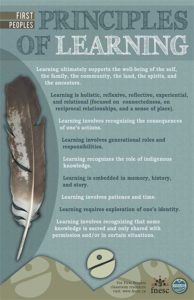
The First Peoples Principles of Learning (FPPL) [website] is a guiding set of questions and philosophies which represent an attempt to identify common elements in the varied teaching and learning approaches particular to Indigenous societies. These principles help the facilitator make connections with their students, the community and give guidance for shaping the teaching philosophy and mode of instructions and assessment in the classroom. The FPPL recognizes that pedagogy in Indigenous societies is dynamic and culturally specific – rooted in a specific language and viewpoint. Understanding, embracing and incorporating the FPPL into your everyday teaching and pedagogy will build deeper connections to your students and engage the holistic view of learning into your course.
Freedom of Information and Protection of Privacy Act (FIPPA)
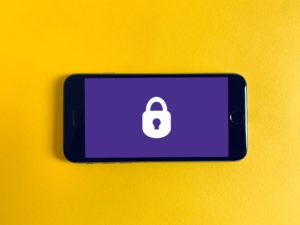
Please visit the FIPPA chapter in our appendix section of our book [website] for information regarding the Freedom of Information and Protection of Privacy Act [website] when using cloud-based software, such as the programs listed below.
Tools to Support Relevancy in Online Learning
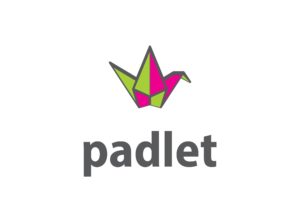
Padlet [website] works like an online post-it board that can be used and shared by both the learner and instructor with a unique Padlet link. Padlet allows the user to insert ideas, GIFs, images, links, text, or audio clips onto digital post-it notes that show up on the Padlet ideas board for the class to see. Ideas and content can be added anonymously, or with names attached, depending on the focus of the Padlet session. The ease of use and efficiency of using Padlet is a real draw; students just have to take a device, enter the padlet code and start adding their sticky notes online. They can see their ideas and those of their peers and instructors, gathered on the main board immediately.
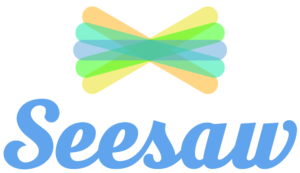
SeeSaw [website] is a versatile digital portfolio accessible to teachers, students, and parents. Students can share their work in real time by submitting a video of them working through an assignment, adding a photo of their work, uploading an audio file of their reflection or upload a file from a device or cloud location. Students can collaborate with others by sharing feedback and responses or working together on a digital project. Teachers can review their digital portfolios for assessment or as a tool to get to know the students in their class.
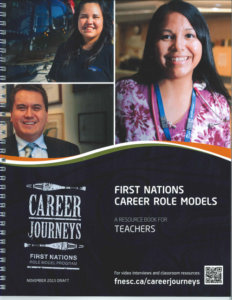
The Career Journeys First Nations Career Role Model Resource Guides [website] provided by the First Nations Education Steering Committee (FNESC) [website] are designed to raise the awareness of First Nations youth and their families about career possibilities, and to show examples of how to navigate education and training pathways to those careers. The materials are intended for intermediate and secondary level students and include video interviews, a teacher resource book, a parent & student guide, and classroom posters.

